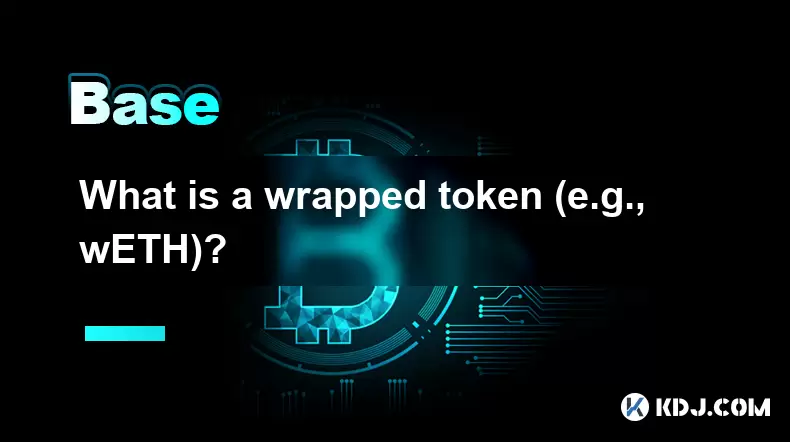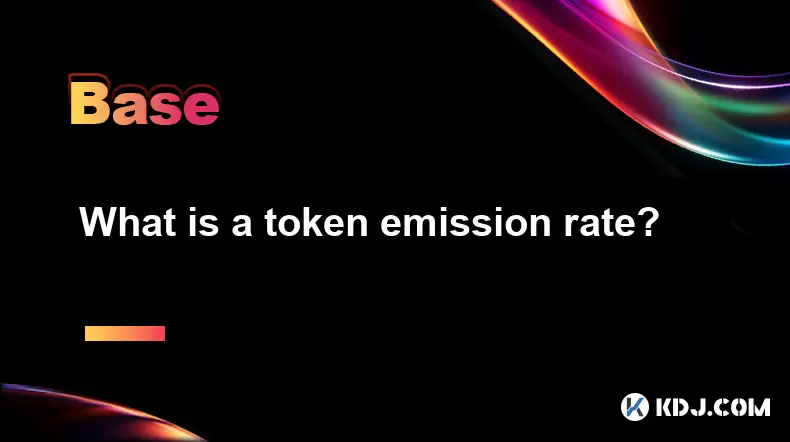-
 Bitcoin
Bitcoin $108,562.4295
0.46% -
 Ethereum
Ethereum $2,533.9553
1.52% -
 Tether USDt
Tether USDt $1.0002
-0.01% -
 XRP
XRP $2.2542
2.23% -
 BNB
BNB $662.4567
1.48% -
 Solana
Solana $151.4114
3.48% -
 USDC
USDC $0.9999
0.00% -
 TRON
TRON $0.2860
0.91% -
 Dogecoin
Dogecoin $0.1685
3.72% -
 Cardano
Cardano $0.5809
1.63% -
 Hyperliquid
Hyperliquid $39.2916
1.85% -
 Sui
Sui $2.8874
0.85% -
 Bitcoin Cash
Bitcoin Cash $496.5801
2.72% -
 Chainlink
Chainlink $13.3582
2.48% -
 UNUS SED LEO
UNUS SED LEO $9.0279
0.07% -
 Avalanche
Avalanche $18.0773
2.30% -
 Stellar
Stellar $0.2426
3.05% -
 Toncoin
Toncoin $2.9086
6.01% -
 Shiba Inu
Shiba Inu $0.0...01170
2.97% -
 Hedera
Hedera $0.1587
3.47% -
 Litecoin
Litecoin $87.4596
1.13% -
 Monero
Monero $317.0425
0.73% -
 Polkadot
Polkadot $3.3778
1.90% -
 Dai
Dai $0.9999
-0.01% -
 Ethena USDe
Ethena USDe $1.0001
-0.01% -
 Bitget Token
Bitget Token $4.4095
0.63% -
 Uniswap
Uniswap $7.3593
6.80% -
 Pepe
Pepe $0.0...09910
3.64% -
 Aave
Aave $274.7388
2.68% -
 Pi
Pi $0.4607
0.48%
What is a wrapped token (e.g., wETH)?
Wrapped tokens like wETH enable seamless use of assets across blockchains, enhancing DeFi interoperability and liquidity.
Jul 05, 2025 at 07:32 pm

Understanding Wrapped Tokens
A wrapped token is a type of cryptocurrency asset that represents another underlying digital asset. It operates by locking the original asset in a smart contract and issuing an equivalent amount of wrapped tokens on a different blockchain. This mechanism allows for interoperability across blockchains, enabling assets like Ethereum (ETH) to be used on other networks such as Binance Smart Chain or Polygon.
For instance, wETH (Wrapped Ethereum) is a tokenized version of ETH, allowing it to be used within decentralized applications (dApps) and decentralized exchanges (DEXs) that require ERC-20 tokens. Since native ETH does not conform to the ERC-20 standard, wrapping it into wETH makes it compatible with these platforms.
The Mechanics Behind Wrapping a Token
The process of creating a wrapped token involves several technical steps:
- A user sends the native asset (e.g., ETH) to a custodian or smart contract.
- The custodian verifies receipt and mints an equal amount of wrapped tokens (e.g., 1 ETH = 1 wETH).
- These wrapped tokens are then released to the user's wallet on the target blockchain.
- When unwrapping is needed, the wrapped tokens are burned, and the original asset is released back to the user.
This system relies heavily on trustless mechanisms when using smart contracts or trusted custodians in centralized setups. Platforms like Weth.io, RenVM, or WBTC often facilitate this wrapping process across various ecosystems.
Use Cases of Wrapped Tokens in DeFi
Wrapped tokens play a pivotal role in the decentralized finance (DeFi) space. They enable liquidity across multiple chains, which is crucial for protocols aiming to offer cross-chain services. For example:
- Lending platforms accept wrapped tokens as collateral because they conform to widely accepted token standards.
- Decentralized exchanges use them to provide trading pairs without requiring users to switch between native coins and tokens.
- Yield farming strategies often involve moving wrapped assets between chains to optimize returns.
By enabling seamless asset movement, wrapped tokens enhance capital efficiency and expand the utility of assets beyond their native blockchains.
Differences Between Native and Wrapped Tokens
Although wrapped tokens mirror the value of their native counterparts, several differences exist:
- Token Standards: Native ETH is not ERC-20 compliant, while wETH adheres to the ERC-20 standard, making it usable in smart contracts that expect ERC-20 tokens.
- Transaction Fees: Using wrapped tokens may incur additional gas fees due to wrapping/unwrapping processes.
- Trust Model: Some wrapped tokens rely on custodians, introducing counterparty risk, whereas others use decentralized bridges or smart contracts to minimize trust assumptions.
These distinctions are essential for users to understand before engaging in transactions involving wrapped tokens.
How to Wrap ETH into wETH
To wrap ETH into wETH, follow these detailed steps:
- Ensure you have ETH in a compatible wallet such as MetaMask.
- Navigate to a wrapping service like Weth.io or use integrated DEX platforms like Uniswap.
- Connect your wallet and approve the contract interaction.
- Specify the amount of ETH you want to wrap.
- Confirm the transaction and wait for the equivalent wETH to appear in your wallet.
It’s important to note that each step requires careful attention to transaction details, network selection, and gas fees to avoid errors or loss of funds.
Risks and Considerations When Using Wrapped Tokens
While wrapped tokens offer flexibility, they also come with potential risks:
- Smart Contract Risk: If the wrapping contract has vulnerabilities, funds could be lost or stolen.
- Custodial Risk: In some cases, wrapped tokens depend on third-party custodians who hold the underlying assets.
- Price Slippage: During high volatility or low liquidity scenarios, swapping wrapped tokens may result in slippage.
- Cross-chain Bridge Risks: Moving wrapped tokens across chains exposes users to bridge-specific exploits or delays.
Users should always research the wrapping mechanism, review audits (if available), and consider the reputation of the custodian or protocol involved.
Frequently Asked Questions
What happens if the wrapped token contract gets hacked?
If a wrapped token contract is compromised, there’s a risk of losing the underlying assets. It’s crucial to assess the security measures and audit status of the wrapping platform before use.
Can I unwrap wETH anytime?
Yes, wETH can be unwrapped back into ETH at any time through the same interface or platform used for wrapping, assuming no restrictions are imposed by the protocol.
Are all wrapped tokens backed 1:1 with the original asset?
Ideally, yes. Reputable wrapped token systems maintain a 1:1 peg with the underlying asset. However, this depends on the transparency and integrity of the custodian or smart contract managing the reserves.
Is wrapping limited to ETH only?
No, wrapping applies to various cryptocurrencies. For example, WBTC (Wrapped Bitcoin) allows Bitcoin to function on the Ethereum network, expanding its usability in DeFi applications.
Disclaimer:info@kdj.com
The information provided is not trading advice. kdj.com does not assume any responsibility for any investments made based on the information provided in this article. Cryptocurrencies are highly volatile and it is highly recommended that you invest with caution after thorough research!
If you believe that the content used on this website infringes your copyright, please contact us immediately (info@kdj.com) and we will delete it promptly.
- Ethereum Name Service (ENS) Price Forecast 2025-2031: What the Future Holds
- 2025-07-07 08:50:12
- XRP Price: Rally, Crash, or Just Cruising? A New Yorker's Take
- 2025-07-07 08:55:12
- Worldcoin Price Prediction: Bullish Triangle Hints at Potential Breakout!
- 2025-07-07 08:30:13
- UAE, Crypto Investors, and Golden Visas: Separating Fact from Fiction
- 2025-07-07 08:30:13
- Ondo Finance and Oasis Pro: A Power Play for Tokenized Finance with Key Financial Licenses
- 2025-07-07 09:10:13
- BNB, Binance, and CZ: What's the Buzz?
- 2025-07-07 06:50:12
Related knowledge

What is a user-generated content (UGC) NFT platform?
Jul 04,2025 at 01:49pm
Understanding the Concept of a UGC NFT PlatformA user-generated content (UGC) NFT platform is a digital marketplace or ecosystem where users can create, mint, and trade non-fungible tokens (NFTs) that represent ownership of original digital content they produce. Unlike traditional NFT platforms where creators often include professional artists or develo...

What is composability in DeFi?
Jul 06,2025 at 04:07pm
Understanding the Concept of Composability in DeFiComposability in DeFi refers to the ability of decentralized finance protocols and smart contracts to interact seamlessly with one another, much like building blocks that can be combined in various ways to create new financial products and services. This concept is a core innovation within the DeFi ecosy...

What is a "crypto primitive"?
Jul 05,2025 at 10:14pm
Defining the Concept of a Crypto PrimitiveIn the context of blockchain and cryptocurrency, a crypto primitive refers to a fundamental building block or foundational element used in constructing decentralized systems and cryptographic protocols. These primitives are essential for enabling secure transactions, consensus mechanisms, and smart contract exec...

What is a fair launch?
Jul 05,2025 at 07:31pm
Understanding the Concept of a Fair LaunchA fair launch refers to the release of a cryptocurrency or blockchain project in a manner that ensures equal opportunity for all participants. Unlike traditional token launches, which may involve private sales, venture capital funding, or pre-mining, a fair launch emphasizes transparency and decentralization. In...

What is a token emission rate?
Jul 07,2025 at 02:51am
Understanding the Basics of Token Emission RateIn the realm of cryptocurrencies, token emission rate refers to the speed or frequency at which new tokens are generated and released into circulation within a blockchain network. This concept is fundamental in understanding how certain blockchain ecosystems manage inflation, incentivize participants, and m...

What is a cliff in tokenomics?
Jul 05,2025 at 07:18pm
Understanding the Concept of a Cliff in TokenomicsIn the world of cryptocurrency and blockchain, tokenomics plays a pivotal role in shaping the economic behavior of a digital asset. One of the key mechanisms used to manage token distribution is known as a cliff. This concept is commonly applied in projects that include vesting schedules for tokens, espe...

What is a user-generated content (UGC) NFT platform?
Jul 04,2025 at 01:49pm
Understanding the Concept of a UGC NFT PlatformA user-generated content (UGC) NFT platform is a digital marketplace or ecosystem where users can create, mint, and trade non-fungible tokens (NFTs) that represent ownership of original digital content they produce. Unlike traditional NFT platforms where creators often include professional artists or develo...

What is composability in DeFi?
Jul 06,2025 at 04:07pm
Understanding the Concept of Composability in DeFiComposability in DeFi refers to the ability of decentralized finance protocols and smart contracts to interact seamlessly with one another, much like building blocks that can be combined in various ways to create new financial products and services. This concept is a core innovation within the DeFi ecosy...

What is a "crypto primitive"?
Jul 05,2025 at 10:14pm
Defining the Concept of a Crypto PrimitiveIn the context of blockchain and cryptocurrency, a crypto primitive refers to a fundamental building block or foundational element used in constructing decentralized systems and cryptographic protocols. These primitives are essential for enabling secure transactions, consensus mechanisms, and smart contract exec...

What is a fair launch?
Jul 05,2025 at 07:31pm
Understanding the Concept of a Fair LaunchA fair launch refers to the release of a cryptocurrency or blockchain project in a manner that ensures equal opportunity for all participants. Unlike traditional token launches, which may involve private sales, venture capital funding, or pre-mining, a fair launch emphasizes transparency and decentralization. In...

What is a token emission rate?
Jul 07,2025 at 02:51am
Understanding the Basics of Token Emission RateIn the realm of cryptocurrencies, token emission rate refers to the speed or frequency at which new tokens are generated and released into circulation within a blockchain network. This concept is fundamental in understanding how certain blockchain ecosystems manage inflation, incentivize participants, and m...

What is a cliff in tokenomics?
Jul 05,2025 at 07:18pm
Understanding the Concept of a Cliff in TokenomicsIn the world of cryptocurrency and blockchain, tokenomics plays a pivotal role in shaping the economic behavior of a digital asset. One of the key mechanisms used to manage token distribution is known as a cliff. This concept is commonly applied in projects that include vesting schedules for tokens, espe...
See all articles

























































































